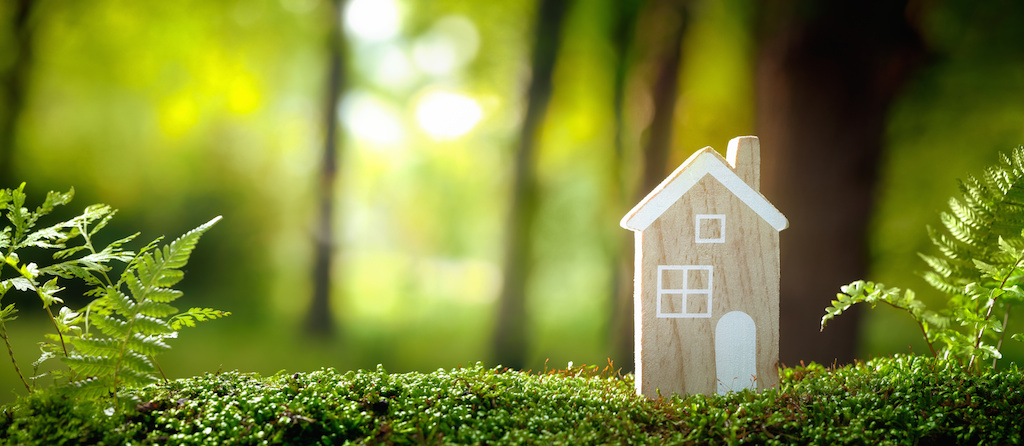
Will Kirkman, managing director at Ecomerchant and contributor to built environment event Futurebuild explains why we need to focus our attention on developing healthier homes, rather than simply building at large volumes.
Volume built mass housing and the instant suburb home, labelled as ‘executive’, can come at a significant cost to our health and sanity, as well as our pockets. The rapid enhancement to beneficent technologies should, in theory, provide benefits to our wellbeing. However, despite these companies looking to improve their offerings through state-of-the-art construction technology, it’s not necessarily to benefit those actually purchasing and living in the homes. The ones who feel the positive impact are the company shareholders – benefiting from the profits volume house builders make.
Often, the house buyer and the families moving into these homes will pour over the must-haves of their new home. Key features will often be matched against aspirations. Detached house? Tick. Cottage façade? Tick. Contemporary kitchen? Tick. Three bathrooms? Tick. Garage? Tick. Energy management system? Tick. The streets are generally named in almost an attempt to pay homage to the foxes, badgers, larks, oaks or bluebells that have lost their habitat to build this new Jerusalem.
The problem
The owners of these homes may begin to notice that their new ‘dream home’ is a bit on the tight size — possibly even smaller than their previous home. Developers in the UK are now building the smallest houses in Europe, simply because they can.
Space standards were eradicated in 1979 and, since then, there has been a consistent decrease in the size of homes. Modern properties are up to half the size of their equivalents built in the 1930s. This has led to the disappearance of pantries, porches and inbuilt storage spaces. Prams and bicycles struggle to fit in hallways, dining rooms in the more modest properties have been replaced with a small table in the kitchen. Bedrooms have simply become a room to sleep in, with little space to even squeeze past the bed, let alone for fitting in a dressing table or wardrobe.
The impact on our health
‘Indoor air quality’ is a phrase that many of us aren’t familiar with — we generally assume that the worst days of belching factory chimneys existed in the era of back-to-back housing and tuberculosis. However, the fact that we can now see the sky does not necessarily mean that air pollution isn’t there anymore — we just can’t see it. Particularly in urban areas, it’s all around us – in our homes and around them.
In a recently built home, you will often be met by the odour of new paintwork, carpets, wallpaper, flooring and furniture. This smell is often associated with a new home, but the apparent freshness is misleading. The smell is actually the scent of Volatile Organic Compounds (VOCs).
According to the US Environmental Protection Agency, “VOCs include a variety of chemicals, some of which may have short- and long-term adverse health effects. Concentrations of many VOCs are consistently higher indoors (up to ten times higher) than outdoors. VOCs are emitted by a wide array of products numbering in the thousands.”
A report by the Royal College of Physicians was concerned that vulnerable adults are more at risks of strokes and heart attacks as a result of indoor air pollution, but the threat to children is even more concerning. The report stated that, “Research is beginning to point towards effects on growth, intelligence, asthma, and development of the brain and coordination. Harm to babies and children will have an impact that lasts far into the future.”
Our planet
Equally worrying is the impact our lifestyles have on the wider, natural environment. The construction industry has an enormous appetite for raw materials – chopping, dredging and excavating resources at a rapid rate. Much of what we use to build with is widely available, but some materials, such as oil, are becoming increasingly rare.
Our natural habitat, such as forests and oceans, is also diminishing at a rapid rate. Despite some natural resources being replaceable, many aren’t. As such, by continuing to use up natural resources at our current rate, we are compromising the capacity of succeeding generations to enjoy the same natural wealth as we have.
Globally, we’re using up resources and causing pollution at a level 40 per cent higher than the earth can sustain. Even from a distance, it’s easy to see how our rapid consumption is damaging our environment and compromising the future of generations to come.
What can you do?
Despite all of this, we shouldn’t take the regime of poor housing for granted. Rather than simply accepting these substandard, poorly built, dangerous and unsuitable housing, we can set it in (artificial) stone. Rather than buying off-the-shelf from an anonymous corporation, we can literally build our own homes.
Of course, the process is a bit more involved, but the payoff is substantial. We can build our home to our own higher, safer, more energy efficient standards. The materials and components used will be more supportive of our health, without, quite literally, costing the earth. Fundamentally, we can build and live better lifestyles for ourselves and future generations.
So, how can you make it happen?
The building technologies and materials needed are readily available. In a quiet corner of the busy, complex construction industry, lives environmentally-aware architects, building technicians, manufacturers and suppliers who are driving to change the way the industry operates. Their view is one that may resonate with you; one which involves building energy efficient buildings with safe, sustainable materials; one which supports the health of you, your children and our natural environment.

